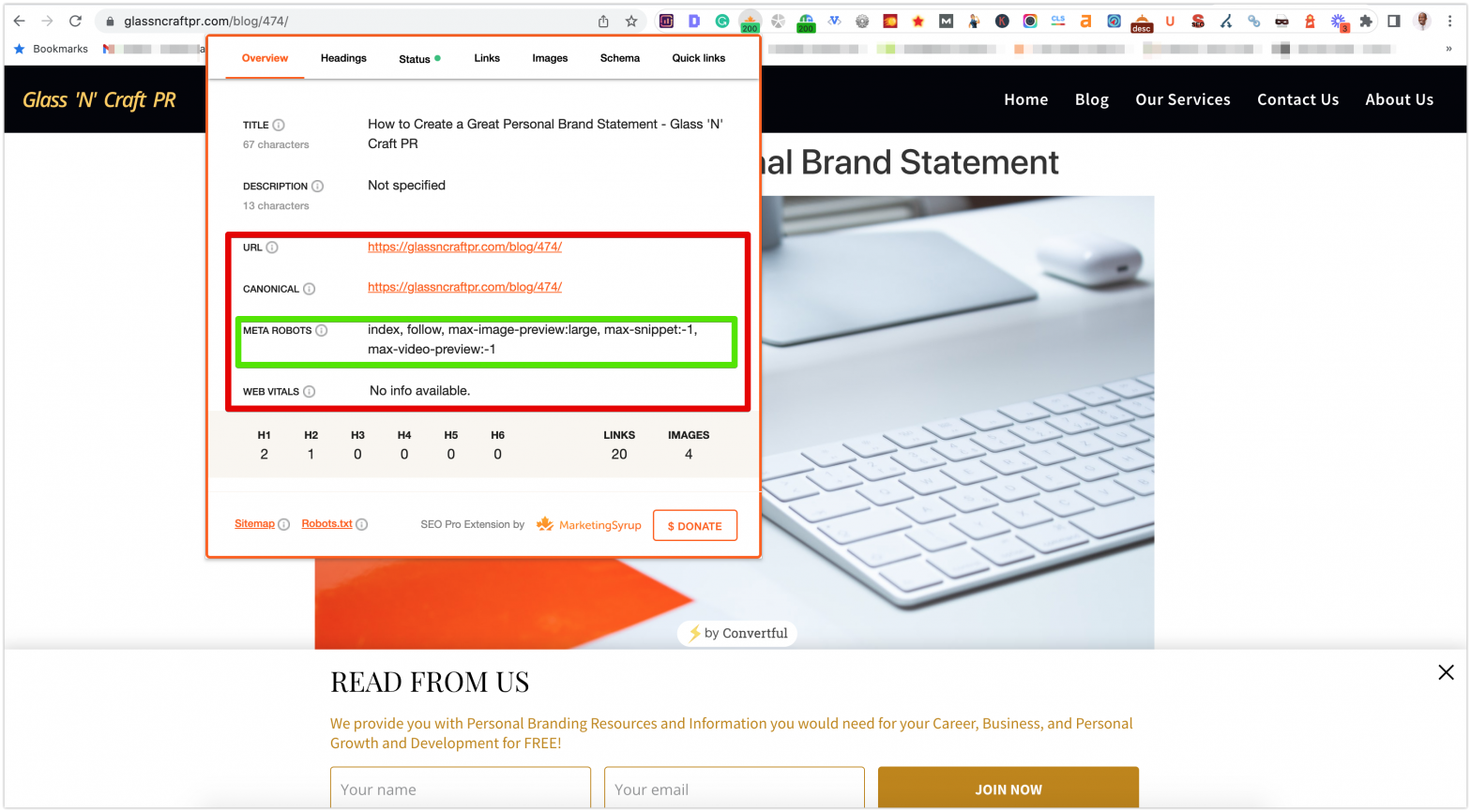“How’s your tech SEO journey going?” Anu, my assistant, asked? “Yeah, fine.”
“I have an issue with a personal project,” she said, “the pages are not ranking, can you help.”
“Yeah, sure.” I said, “send me the link.”
She did. And I promised to do a mini-case study and write about the process.
The website is barely a month old, so even without checking, I knew that the first recommendation would be to start filling up the website with relevant content.
But tech SEOs don’t jump to conclusions, we start from the why?
Then I asked Anu why she wanted the pages to rank. Her response was simple:
We want to beat our competitors.
So, I wore my SEO hat, and here’s the process.
Let’s dig in. But first,
What’s the Glass’N’Craft Website about?
Glass’N’Craft is a personal branding and c-suite PR agency positioned to help clients identify, nurture and sustain a clear personal brand. They ensure that everyone who comes to them builds and sustains a purpose that metamorphoses into an influential brand.
The Audit Process
I started with a ScreamingFrog audit as shown below.
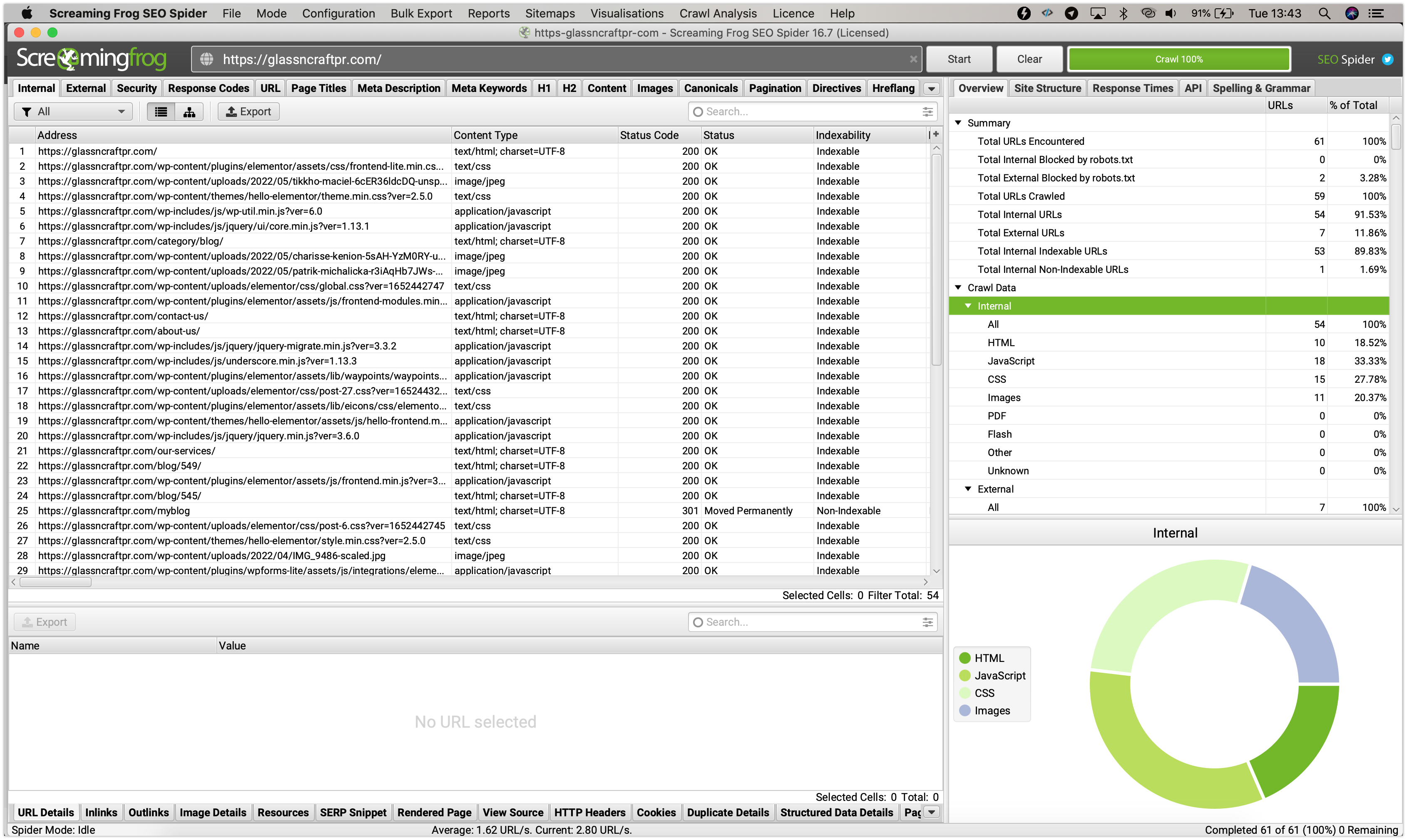
Screaming Frogs summary tab is enough for this journey;
- Total URLs Encountered is 61
- Total Internal Blocked by robots.txt is 0
- Total external Blocked by robots.txt is 2
- Total URLs crawled is 59 (obviously, since 2 URLs were blocked) etc.
I looked through other points on Screaming Frog, and I felt everything seemed good, except for a few content issues that I noted.
I decided to use another tool:
Tech SEO website audit checklist by Aleyda Solis
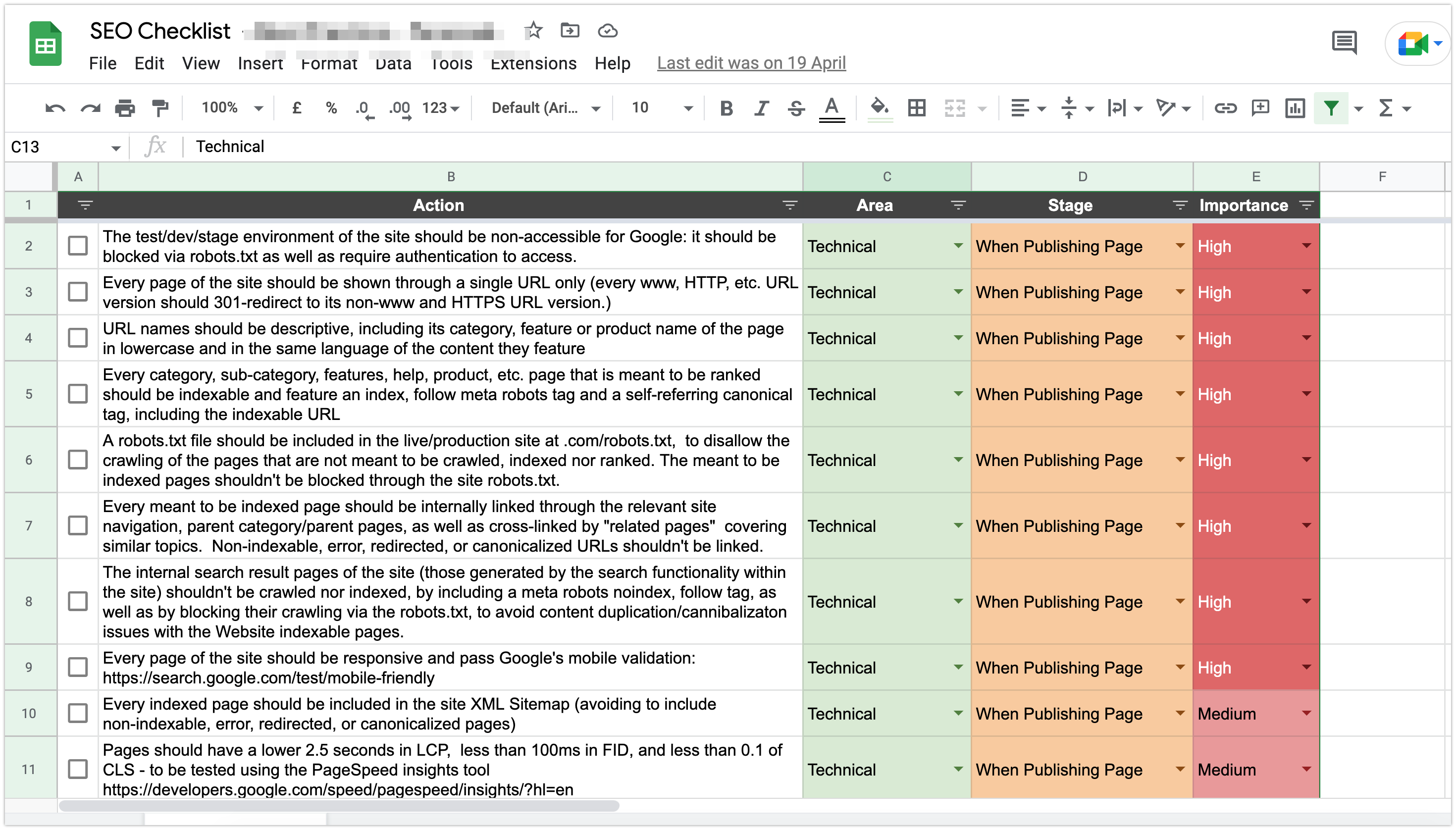
This checklist guides me on what to check to ensure that the website provides the ultimate user experience for the users and Google spider to effortlessly crawl.
Now, let’s do the actions one at a time and see our website fares.
The test/dev/stage environment of the site should be non-accessible for Google: it should be blocked via robots.txt as well as require authentication to access.
The test environment is an area where the developer makes changes to the other version, test, and ensure functionality, before pushing it to update or override the original website. Most developers for small businesses do this on their local drive, i.e their computer hard drive, before pushing. This website, however, does not have that. And there’s no problem with that.
Every page of the site should be shown through a single URL only (every www, HTTP, etc. URL version should be 301-redirect to its non-www and HTTPS URL version.)
Checked and Fine.
The URL of every single link on the site is connected to another version at all ends. So, an HTTP version of a page is linked to the HTTPS version of that same page.
As shown below, the “our-services” page points directly as the page.

Meanwhile, “www.glassncraftpr.com/myblog/” permanently redirects
“https://glassncraftpr.com/myblog/.” More reasons for the “301” redirects are shown below in the image.
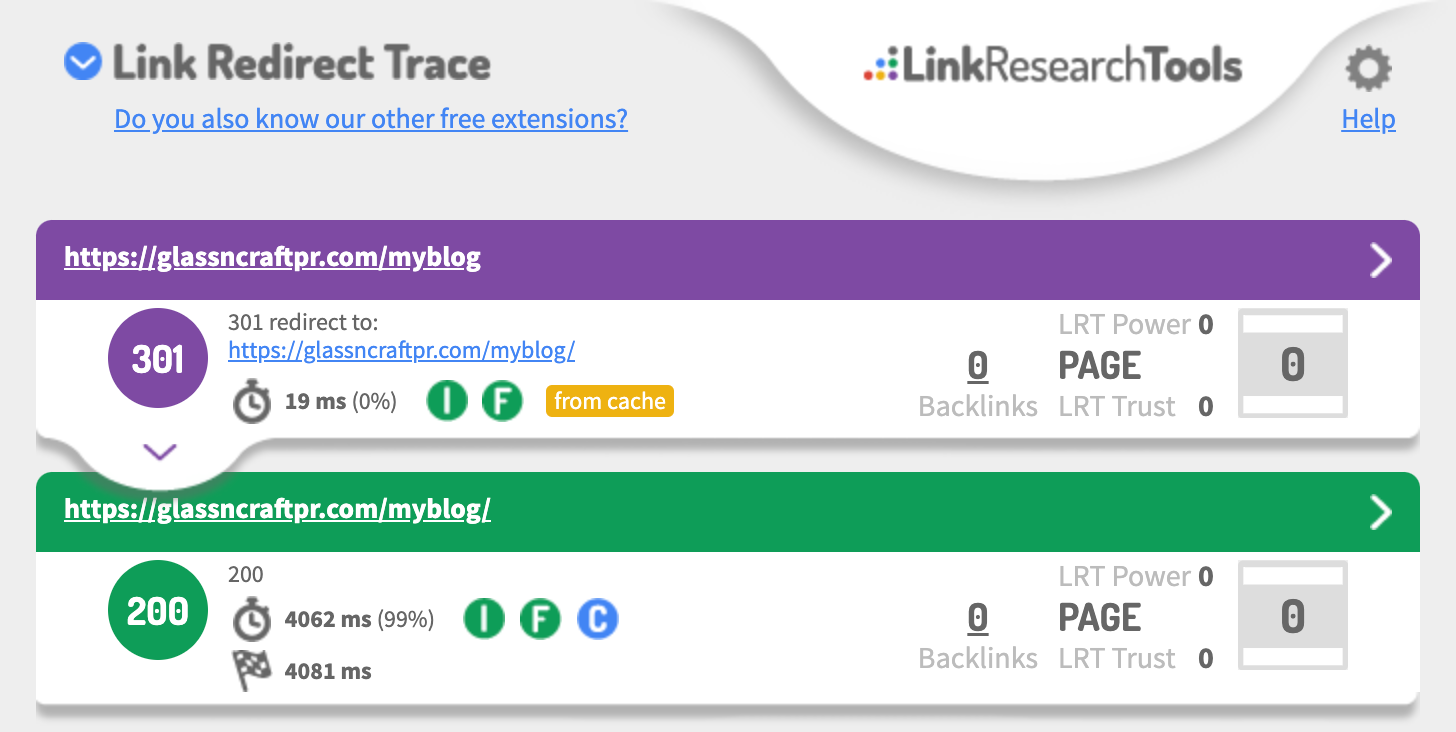
URL names should be descriptive, including its category, feature, or product name of the page in lowercase and in the same language of the content they feature
Checked.
All the URL links are descriptive and all in lowercase. The contact page for example is descriptive and in lowercase.
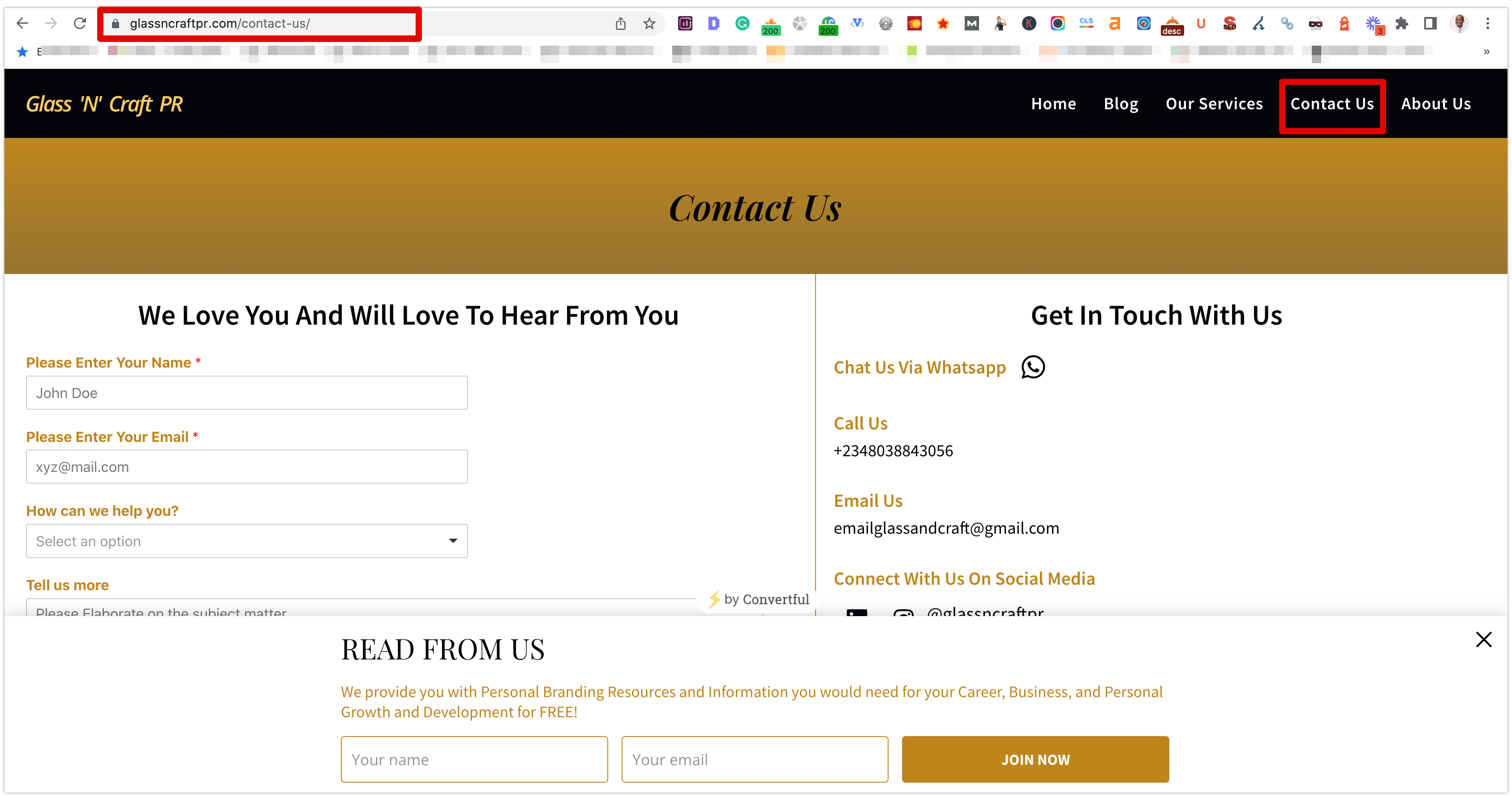
However, the blog post’s URL is not descriptive. And that’s bad for SEO.
The URL is “https://glassncraftpr.com/blog/549/” while the title is “The Robyn Fenty Effect.”
The title would have been interesting if it is: “https//glassncraftpr.com/the-robyn-fenty-effect/”
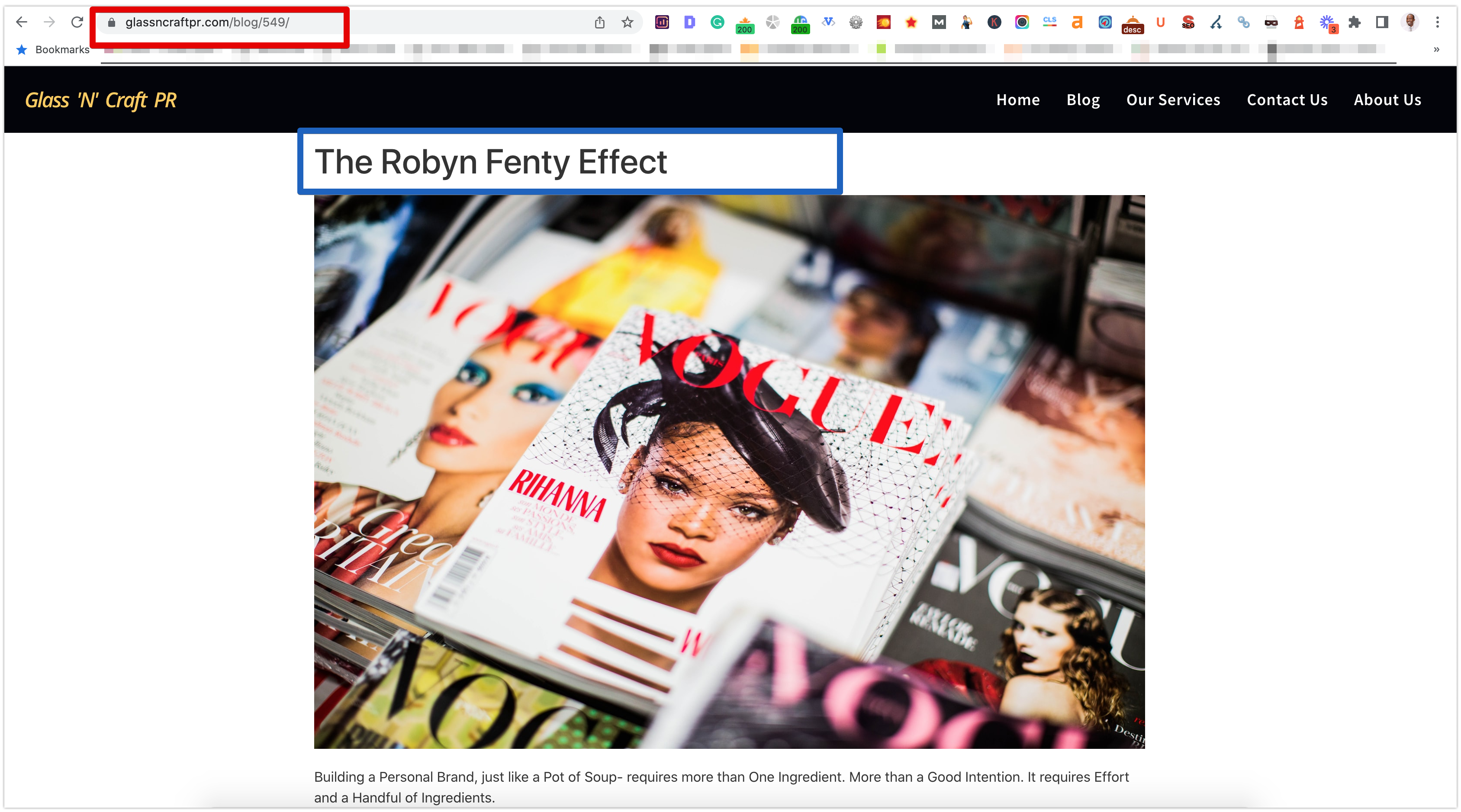
Every category, sub-category, features, help, product, etc. page that is meant to be ranked should be indexable and feature an index, follow meta robots tag and a self-referring canonical tag, including the indexable URL
Checked.
All needed-to-rank pages that are indexed and they feature an index, follow meta robots tag, and they are self-referring canonical tag. See the image below.
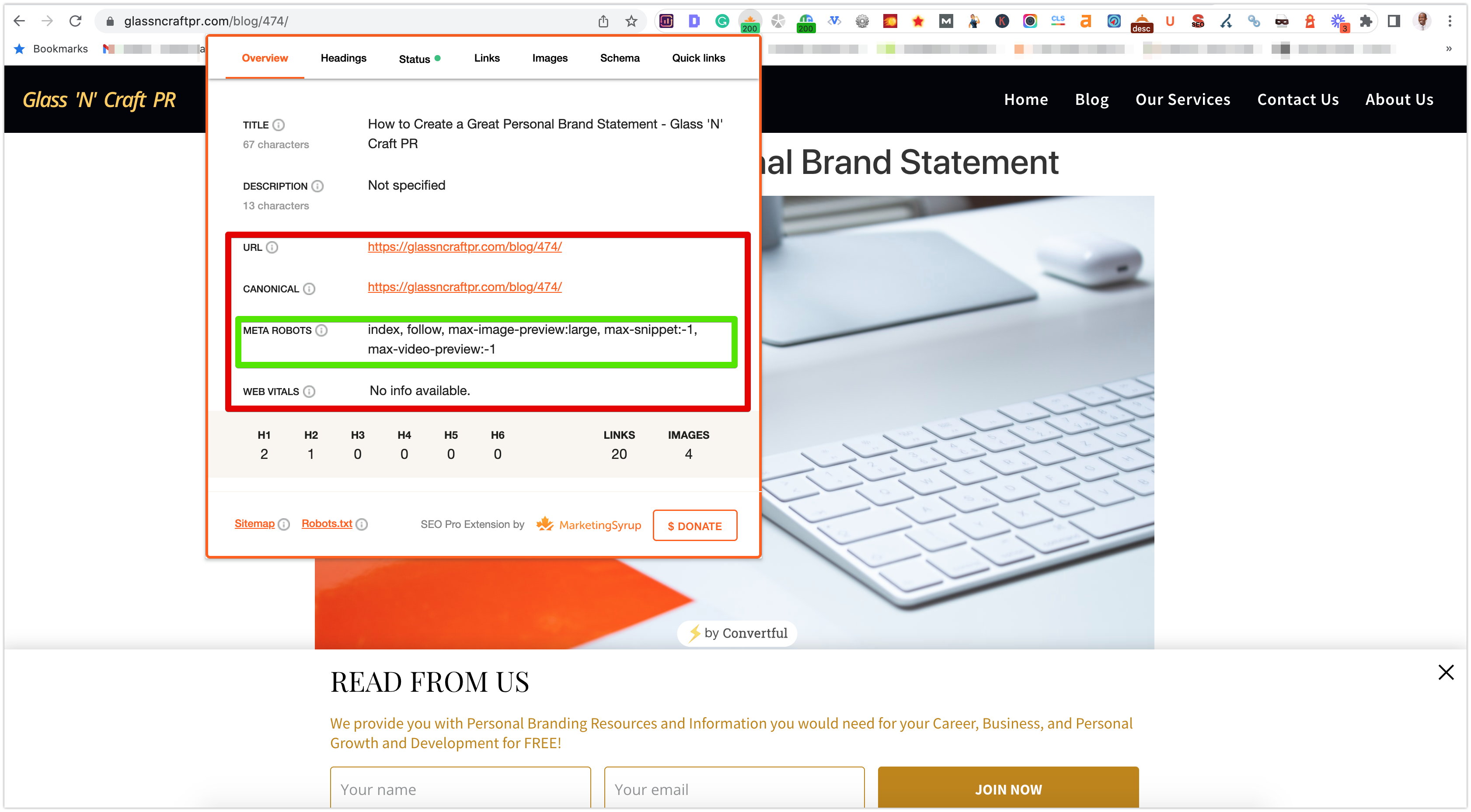
A robots.txt file should be included in the live/production site at .com/robots.txt, to disallow the crawling of the pages that are not meant to be crawled, indexed nor ranked. The meant-to-be indexed pages shouldn’t be blocked through the site robots.txt.
Checked.
As shown below, the user agent is set to all spider/bots, and the only disallowed page is the: /wp-admin/ of the website, which is the route to the WordPress backend login.
All other pages of the site are set for any spider to crawl.

Every meant-to-be indexed page should be internally linked through the relevant site navigation, parent category/parent pages, as well as cross-linked by “related pages” covering similar topics. Non-indexable, error, redirected, or canonicalized URLs shouldn’t be linked.
Checked.
All meant-to-be indexed pages are well linked.
The internal search result pages of the site (those generated by the search functionality within the site) shouldn’t be crawled nor indexed, by including a meta robots noindex, follow tag, as well as by blocking their crawling via the robots.txt, to avoid content duplication/cannibalization issues with the Website indexable pages.
The website doesn’t have an internal search result page.
Every page of the site should be responsive and pass Google’s mobile validation: https://search.google.com/test/mobile-friendly
As shown below, the website homepage and other important pages on the site pass the Google Mobile-Friendly Test.
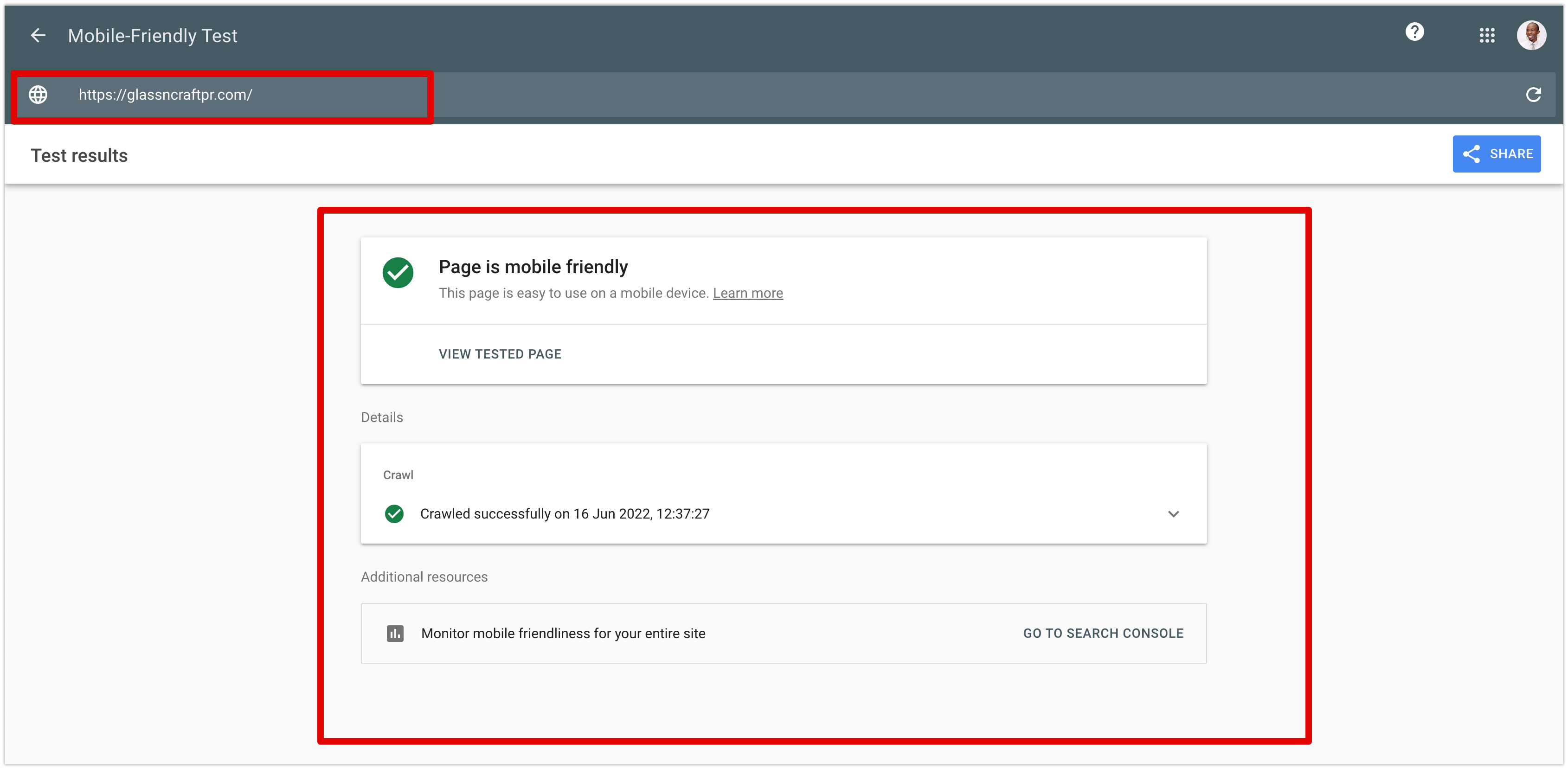
Every indexed page should be included in the site XML Sitemap (avoiding to include non-indexable, error, redirected, or canonicalized pages)
One of the reasons I appreciate the Yoast SEO plugin is that it takes sitemap generation out of the way for beginners. Though if your website is well internally linked, you might not have any need for sitemap generation.
In addition, if your site is new, like GlassNCraft, you should leave it to Yoast SEO to create.
For now, it’s fine.
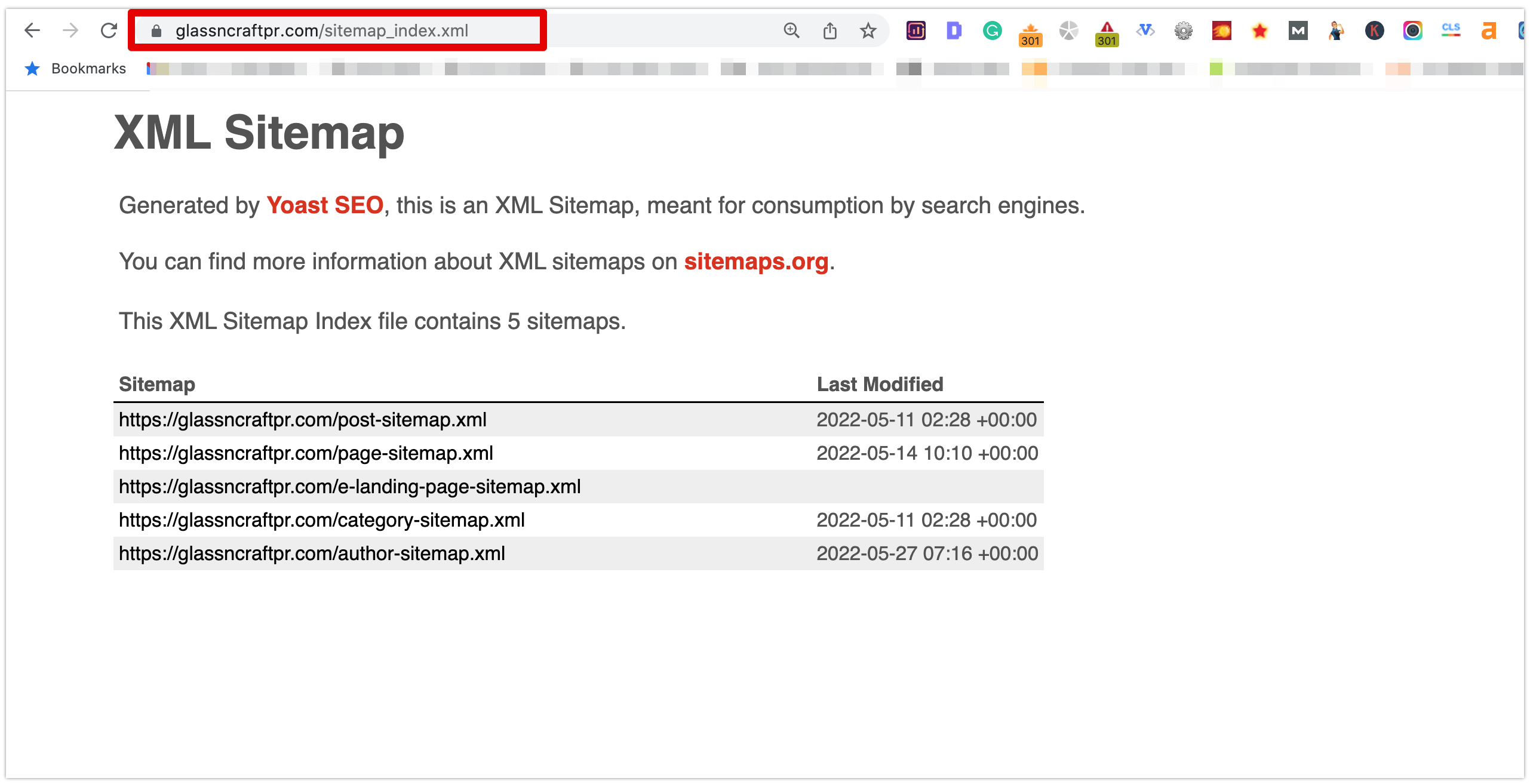
Pages should have a lower 2.5 seconds in LCP, less than 100ms in FID, and less than 0.1 of CLS – to be tested using the PageSpeed insights tool https://developers.google.com/speed/pagespeed/insights/?hl=en
In the below, the LCP is 5.0 seconds. And the FCP is 3.7 seconds. These qualities are on average. And they are more pressing issues because it’s the mobile version of the website. I suspect this is happening because the homepage has very heavy content.
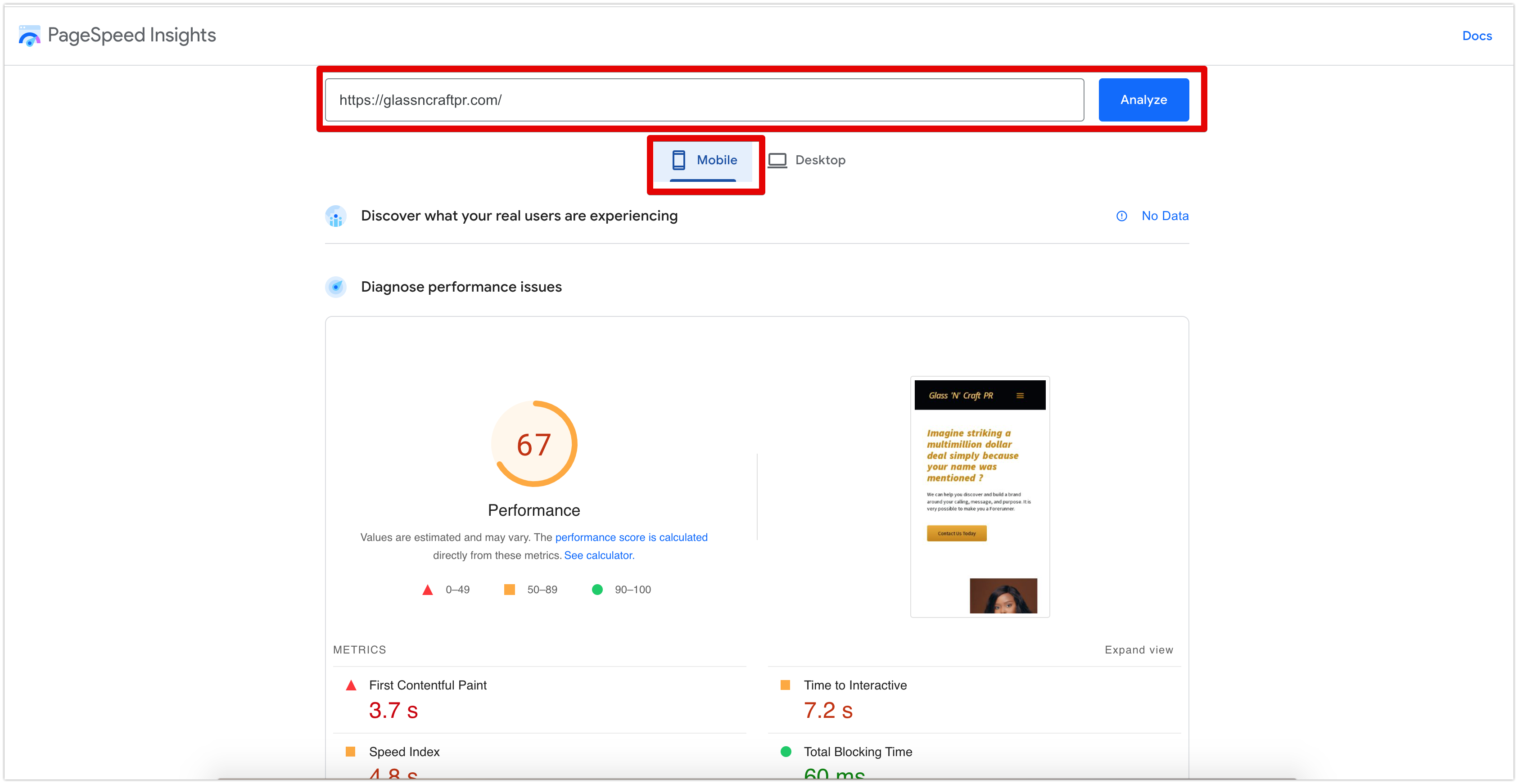
But on desktop, the page speed performance is okay with LCP of 1.2 seconds and FCP of 0.9 seconds.
Pages should feature the relevant Schema.org structured data defined for it: FAQs, How-Tos, VideoObject, Article, etc. The structured data shouldn’t generate Schema.org markup errors and pass the validation of https://search.google.com/test/rich-results
The Rich Results Test for the website also looks great.
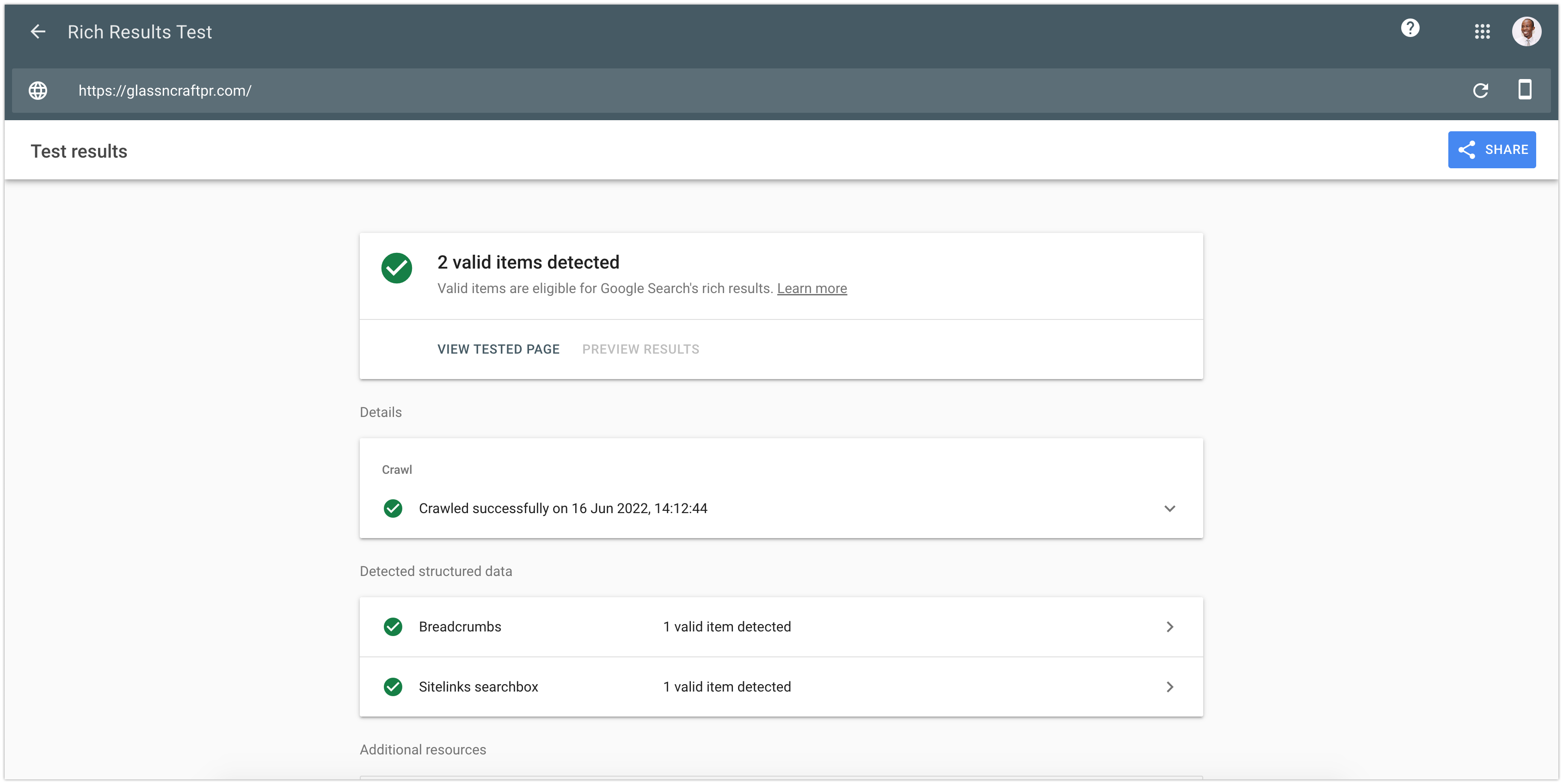
Every page that is shown in more than one country/language version of the site should feature hreflang annotations to specify its own language/country targeting as well as the one of their alternate URLs versions
There’s none for this site, as it’s only configured in English -UK.
Every page should feature a unique descriptive title tag, including the targeted query for which it needs to rank for, that should be included at the start. Also, Every page should feature a unique descriptive meta description, including the targeted query for which it needs to rank for, giving context about the value to be obtained from the page.
The pages on this website have no meta description. The titles for some pages are not descriptive too. Ensure that you write a unique and descriptive title for each page and update your meta description.
The meta-description should target the query which you want to rank for. Content optimization tools like Surfer or Frase can help find these keywords.
Every page should feature a unique descriptive H1 heading tag, including the page-specific category, feature, content, product information
Checked and Fine.
Recommendations: What GlassNCraft should do to outsmart its competitors?
Technically, the website is fine.
Except that the website homepage is very busy and the user experience needs an upgrade. This would also improve the page speed.
Also, to outrank your competitors, below is an image gap that your competitors are yet to take advantage of. They are your holy grail of opportunities.
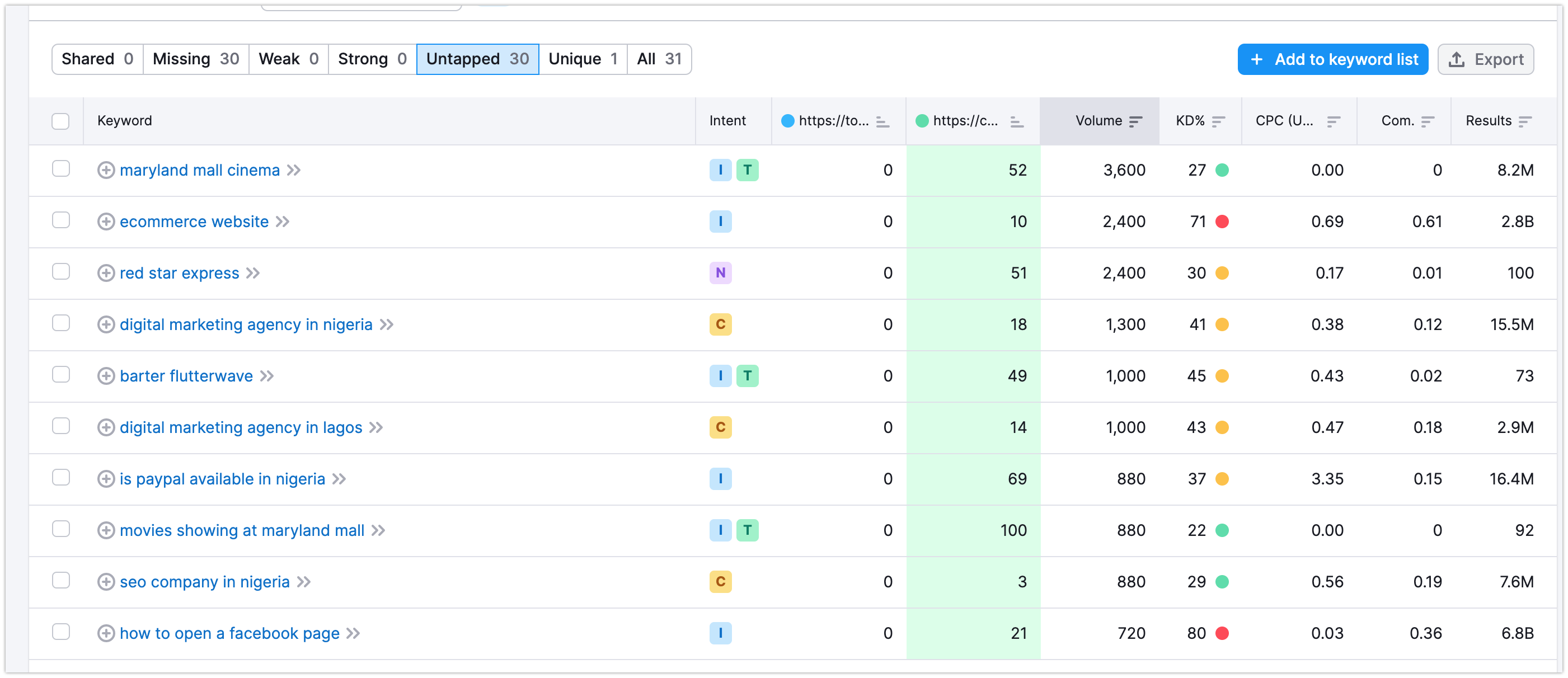
Conclusion
Technical SEO has a huge impact on your rankings. Even if you’re yet to get your content right. With a solid technical SEO foundation, your website content grows to become a customer attraction and retention hub. And this is good for business.

